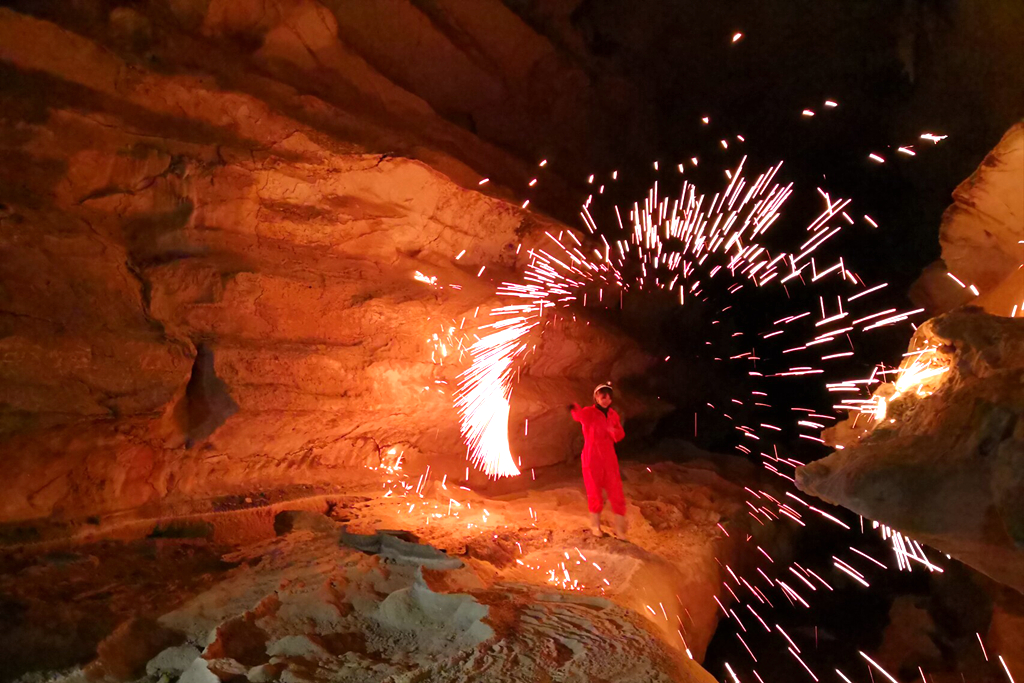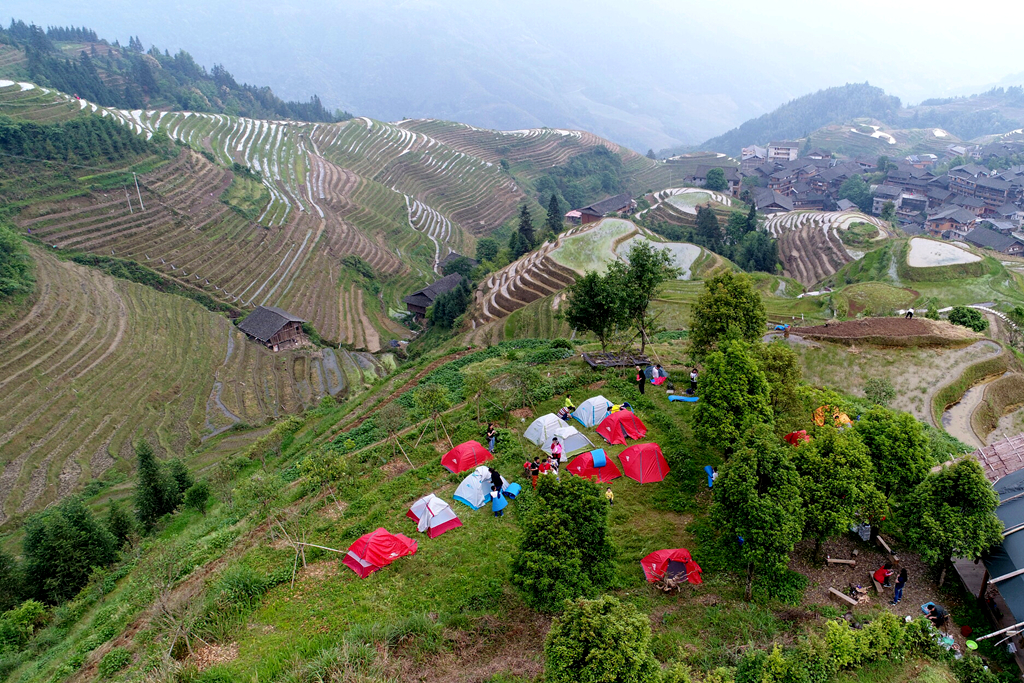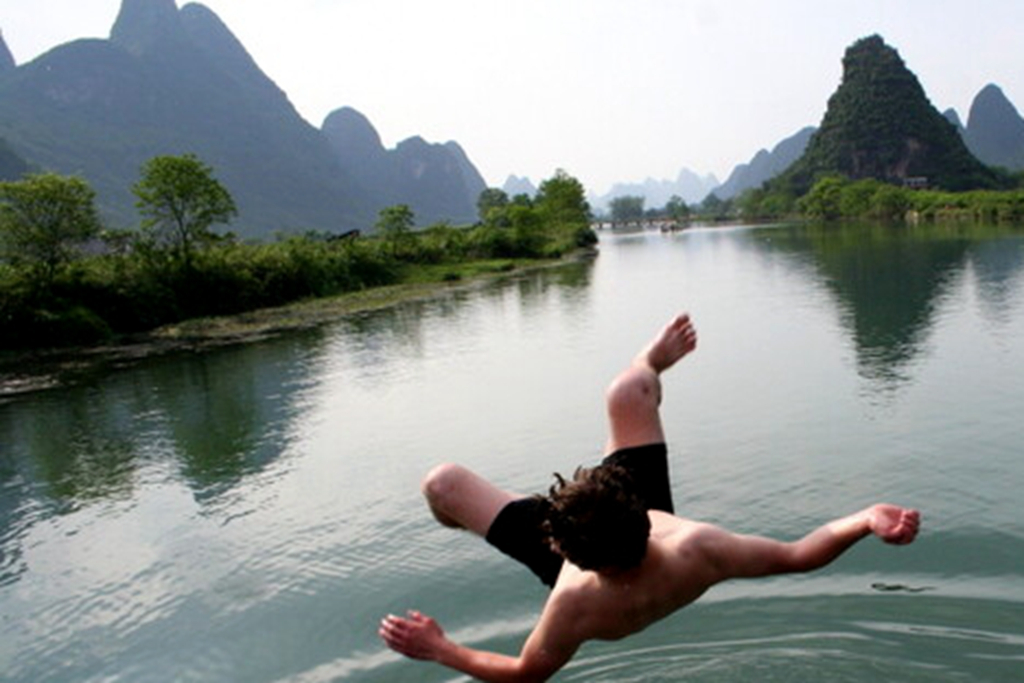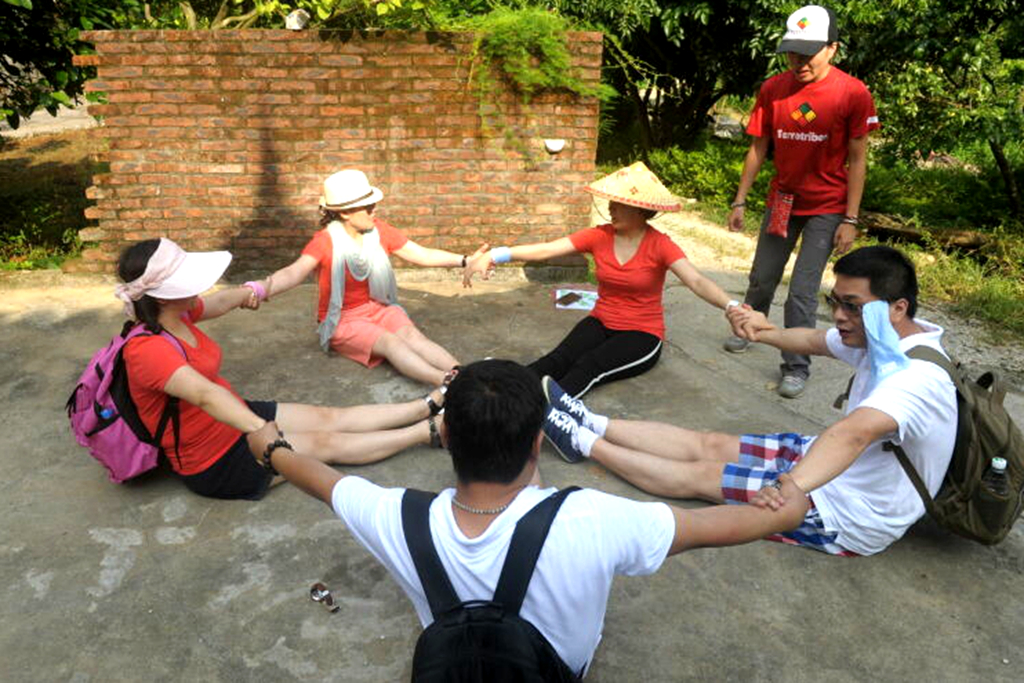Terratribes Articles

10 Fun Outdoor Winter Activities for Kids & Adults
Edited by https://www.moneycrashers.com/; photos by Terratribes
The weather never stops the exploration but your mind does.
During the winter months, most people hole up indoors watching their favorite shows on television. After all, the days are dark and short, it’s cold out, and it’s no fun to put on several layers of gear just to walk the dog.
However, wintertime provides an opportunity to experience nature in a completely different way. There are fewer people outside, and there’s more silence. Without leaves on the trees, you can see more of the landscape. You can often spot wildlife that would have been hidden in the foliage during summer months.
There are so many benefits to getting outside in winter. Being active outdoors can help you reach your goal of cutting calories and losing weight. It’s also an effective way to combat seasonal affective disorder. The fresh air makes you feel better, and it’s a lot more enjoyable and inexpensive than watching TV or surfing the Internet all day. In short, spending time outside during the winter can do you and your family a lot of good, and you’ll come home in a better mood.
Benefits of Spending Time Outdoors
Swedes, who live in one of the coldest and darkest climates on Earth, spend a great deal of their time outdoors. The Nordic concept of friluftsliv (pronounced free-loofts-liv), or “open-air living,” is deeply ingrained in their culture. As a result, they’re some of the fittest and happiest people on the planet.
We’d certainly benefit from taking a page out of their book. Getting outdoors during the winter months offers both physical and psychological benefits.
Better Creative Thinking
If you need some creative ideas, your best bet is to go outside for a walk.
Research published in the Journal of Experimental Psychology found that walking helped promote creative thinking in 81% of study participants, and walking outdoors created more creative ideas than walking indoors on a treadmill.
More Vitamin D
You boost your vitamin D production when you go outside in the sun. Harvard Health reports that vitamin D might be an essential element in fighting everything from heart attacks to cancer to depression. Unfortunately, according to the Environmental Protection Agency, we spend 90% of our time indoors, so we’re not getting enough exposure to sunlight. And a study published in JAMA found that two-thirds of U.S. teens and adults are deficient in vitamin D.
The good news is it doesn’t take much sun exposure to get your daily dose – 10 to 15 minutes should do the trick.
Positive Health Effects
A study published in the journal Nature found that people who spent at least 30 minutes per week in a green space, such as a park, had lower blood pressure and rates of depression. The study also cites 17 other research projects that linked time outdoors to positive health effects, such as:
• Lowered stress
• Fewer allergies
• Greater social well-being
• Lower mortality from cardiovascular disease
• Spending time outdoors also helps prevent nature-deficit disorder, especially in children. Nature-deficit disorder isn’t a medical diagnosis. It’s a useful term to describe our alienation from the outdoors. Richard Louv, author of “Last Child in the Woods,” said in an interview with UC Berkeley’s Greater Good Magazine that nature-deficit disorder can result in multiple physical and mental ailments, including diminished use of the senses, higher rates of physical and emotional illnesses, attention difficulties, an increased rate of nearsightedness, and child and adult obesity.
• Healing Abilities
• Spending time outdoors might actually speed up your body’s healing process.
• A study by University of Pittsburgh researchers published in the journal Psychosomatic Medication found that patients who underwent spinal surgery and stayed in the hospital’s sunniest unit experienced less pain and stress and needed 22% less medication per hour than patients in darker units.
Preparing for the Cold
Swedish parents have a saying they often repeat to their children: “There’s no such thing as bad weather, only bad clothing.”
If you want to enjoy yourself, cold-weather gear is a must. Don’t just head out in sneakers, jeans, and a sweater under your coat. Layers are essential. Wear thermal leggings and several moisture-wicking layers under your sweater. Wear a hat and gloves.
If you’re not cold and uncomfortable, you’re more likely to enjoy yourself and not run back inside after five minutes. Investing in quality outdoor clothing, like you’ll get with brands like Patagonia or Stio, definitely makes winter activities more enjoyable.
If you have kids, always make sure they’re appropriately dressed. Younger children are especially prone to running outside with just a T-shirt under their coat. When you do go out, always pack a complete change of clothes for each child as well as plenty of snacks and drinks.
10 Winter Fun Ideas
It’s challenging for many people to motivate themselves to go outside during the winter. Our natural tendency is to snuggle up and hibernate until March rolls around.
So how do you make yourself get out there? Start small. Tell yourself you’re only going to go outside for 15 minutes. That’s it. And once those 15 minutes are up, you can come back inside.
It works for many people because it’s not much of a commitment. You’re not talking yourself into going on a daylong snowshoeing excursion – you’re going outside for 15 minutes. Anyone can do that.
And when you get outdoors and start moving around, you begin to warm up. The cold air invigorates your system, and you feel good. That first 15 minutes can quickly turn into 30 minutes before you realize it.
1. Ice Skating
It’s always enjoyable to go gliding around a frozen pond or ice skating rink. If you don’t own a pair of ice skates, check thrift stores first, as you can usually find a pair for a few dollars. You can also find used skates on eBay.
2. Go Plogging
A Swedish fitness craze, plogging is now catching on all over the world. “Plogging” is a combination of two words, “plocka,” which means “to pick,” and “jogging.” Plogging is part workout and part social responsibility.
During plogging, you go jogging and pick up litter at the same time. The Washington Post reports that plogging is actually a better workout than jogging because you incorporate squats and bends into your run, and ploggers burn an average of 50 calories more per 30-minute workout than regular joggers.
And you don’t need much to start doing it. Cold-weather running gear, like thermal running tights and a moisture-wicking beanie, is a must. You also need to bring along plastic or latex gloves to pick up trash with and a trash bag to carry it in.
3. Paint on the Snow
Painting on snow is an entertaining outdoor activity for kids who are bouncing off the walls after being stuck indoors. There are a few supplies you need to have on hand:
• Food coloring in the three primary colors: red, blue, and yellow
• A small spray bottle for each child or small bowls and paintbrushes
To make “spray paint,” fill each bottle with water and add a few drops of food coloring until you’ve reached the desired depth of color. If your child prefers painting with a brush, mix the food coloring and water in a bowl.
Using the three primary colors, you can make several other colors. Many food coloring boxes have instructions for creating multiple colors, or you can use these combinations:
• Yellow + blue = green
• Red + blue = purple
• Red + yellow = orange
Encourage your kids to make a snowman or snow fort, and then decorate them using the paint.
4. Go Ice Fishing
If your family enjoys fishing during the warmer months, there’s no reason to stop when the weather turns cold. Ice fishing is a unique and exciting way to fish. But it can also be dangerous if you’re not careful. If the ice isn’t thick enough, you can fall through, which can quickly turn fatal if you’re not immediately rescued.
Most bait shops and fishing stores stay aware of local conditions. But to be safe, never fish on ice that’s less than 4 inches thick. And avoid rivers, since it’s harder for moving water to form thick ice. Ponds and lakes are safer. Popular Mechanics has an informative article on the do’s and don’ts of ice fishing and what you need to get started.
5. Shovel Snow for Someone in Need
Shoveling snow is a great outdoor workout, and you can burn around 223 calories every 30 minutes doing it. You can amplify the positive feelings of this exercise by shoveling snow for someone in your neighborhood or community, like a nearby senior or a friend who’s ill.
Warning: While shoveling snow is a great workout, this intense exercise puts considerable strain on your body. BBC News reports that each winter, about 100 people die while shoveling snow. Shoveling snow raises your heart rate and blood pressure more than other forms of exercise because you’re using many different parts of your body. The cold also works against you because it constricts your blood vessels, which means your heart has to work even harder to pump blood. Additionally, many people hold their breath while they shovel, which puts even more strain on your system. If you’re out of shape or are over age 55, cardiologist Barry Franklin advises you not to do it at all.
6. Take Pictures
Winter seems barren and ugly to some people, especially compared to the bright and colorful bounty of summer. But the sparseness and clean lines of winter have their own beauty if you stop and look.
Bring your camera out to the woods and take pictures of the winter landscape. As you walk, look out for small details, like a pine cone partially hidden in snow or a branch of bright-red hawthorn berries the birds haven’t found yet. Listen to the crunch of your feet on the snow or the chitter of chickadees bobbing on the branches above you.
The outdoors is full of life and beauty in the winter months, giving you the opportunity to take some amazing photographs. All you have to do is go out and look.
7. Go Camping
Yes, you read that right. People do go camping during winter. When there’s snow on the ground, it’s called “snow camping.” And it can be an exciting and memorable experience if you have the right gear.
There are several reasons you should give snow camping a try. First, there’s a good chance you’ll be the only ones out there. It’s just you, your family, and the pristine woods, and you don’t have to worry about battling the crowds for a great campsite. There are also no bugs, ticks, poison ivy, or rain.
Once you get your campsite set up, there are plenty of ways to enjoy the wild.
• Go snow tubing
• Stargaze – stars are often easier to see in winter because of the clear atmosphere
• Build a bonfire and make s’mores
• Go sledding
• Explore the woods on a winter hike
• Identify animal tracks in the snow
Winter camping has its challenges, and it’s an activity that demands specific and sometimes expensive gear. Cold-weather clothing, cold-weather sleeping bags rated at least 10 degrees lower than the lowest temperature you expect to encounter, sleeping pads, and a four-season tent are all essentials. REI has an article on winter camping essentials to use as a starting point.
8. Go Snowshoeing
Snowshoeing is an exhilarating experience everyone in your family can try. While you have to buy gear, it’s not a significant investment. The price for a nice pair of snowshoes is often less than what you’d pay for two days of skiing. And snowshoes last a long time if you take care of them. If you’ve never done it, REI has an informative article on learning to snowshoe.
9. Go on a Treasure Hunt
Food coloring is a parent’s best friend, and you can use this magical ingredient to create frozen “gems” for your kids to find.
Fill an ice cube tray with water, put a couple of drops of food coloring in each mold, and pop the tray in the freezer. When the water freezes, it creates ice cubes that look like gems. Hide these gems around the yard, and let your kids go on a treasure hunt.
10. Play in the Backyard
There are going to be days when you just don’t want to leave home. Fortunately, there are plenty of creative outdoor activities you can do right in your backyard.
• Make snow angels.
• If the temperature is below 32 degrees, go outside and blow bubbles, which freeze on the wand.
• Bring your cookie cutters outside and let your kids make “snow cookies.”
• Make animal snow sculptures.
• Using a needle and thread, string up popcorn or cereal and decorate a tree you can see from a window inside the house. You can watch birds and other wildlife happily nibble on it for days.
• Hollow out an orange and fill the husk with birdseed to make a bird feeder.
• Start a snowball fight.
• Make maple syrup taffy out of snow – see Kitchn‘s article for instructions.
• Use sticks to draw in the snow.
• Make snow lanterns using the tutorial from Little Green Fingers.
• Grab your beach toys and let your kids make snow castles and moats.
Final Word
I used to loathe winter in every sense of the word. For me, it was a time of forced isolation, a season that kept me from doing the thing I wanted to do – namely, being outdoors.
Now, the cold doesn’t bother me. My family and I have embraced full-time travel and live in a 423-square-foot camper, which means we spend a lot of time outdoors no matter what the weather’s like.
My best advice when it comes to getting outside when it’s cold is to dress for the weather. A warm coat, several high-quality, moisture-wicking layers, and warm boots make spending time outdoors in the winter fun instead of torture.
Your family can also be a great source of inspiration when it comes to winter activities. Ask your kids what they’re interested in doing outside this winter. The creative ideas children come up with are amazing.
What do you like to do outside when it’s cold?



